Architectural Terracottas

Roof tiles—often referred to by archaeologists as architectural terracottas—were invented in Greece in the seventh century BCE. Consisting of interlocking and overlapping plates of baked clay, tiled roofs were both water- and fire-proof, and thus offered significant advantages over traditional mud and thatch methods. Initial designs were simple and utilitarian, but as the technology spread around the Mediterranean littoral, manufacturers took increasing advantage of the tiles’ visible surfaces by adding details in relief and/or paint.
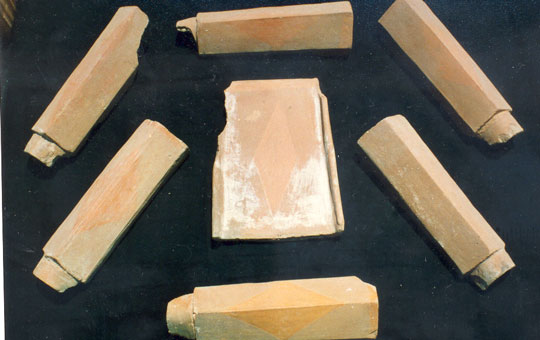
Regional styles of design and decoration soon proliferated. Indeed, the basic “Laconian” style, popularized in the region of Sparta, lasted throughout antiquity and survives today in what is often called a “Spanish” or “Mediterranean” roof.
As thick slabs of baked clay, tiles are impervious to water and thus survive in large numbers at many archaeological sites. That, together with their decoration, makes them ideal artifacts, at once architectural and artistic. Tiles offer archaeologists clues about a site’s history, chronology, and building activity as well as the maker’s artistic temperament and cross-cultural contacts.
The corpus of Gordion terracottas
Tile technology probably reached Anatolia and the Phrygian hinterland around 600 BCE, and the use of complex, decorated terracottas was popular at Gordion primarily in the sixth century (late Middle Phrygian/YHSS 5 period). There is some evidence for tiled roofs from the Hellenistic (YHSS 3) period at the site, although these were simpler and less decorative. Most of what we know stems from the excavations of Rodney Young between 1950 and 1973. Thousands of whole and fragmentary tiles were recovered and can be studied at the site or in the Museum of Anatolian Civilizations in Ankara. Additional evidence emerged during the campaigns of Mary Voigt from 1988 to 2002.
Most of the basic components of ancient roofing systems were used at Gordion. The fundamental typology consists of:
- Pan tiles: flat slabs with raised side edges that function like modern shingles to shed water down a slope.
- Cover tiles: pitched or curved tiles that span and thus protect the seams between adjacent pan tiles.
- Ridge cover tiles: essentially enlarged cover tiles that protect the ridge beam of a double-pitched roof.
- Eaves tiles: raised gutters that prevent water from seeping over the gable edge, or channel it away from the building by means of spouts.
- Sheathing or revetment tiles: vertical plaques used either for protecting wood beams or for purely decorative reasons.
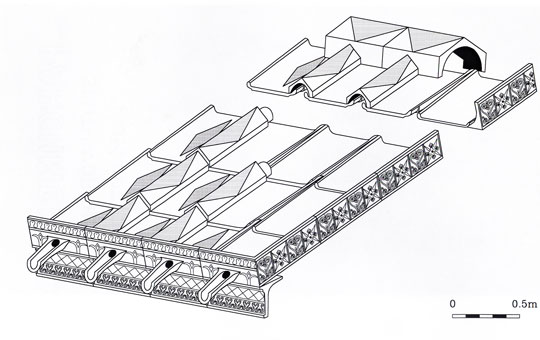
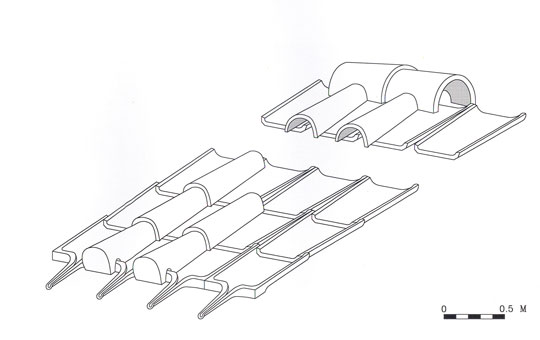
What can tiles reveal about the past?
For a long time the art historical roots of Classical Archaeology biased the field of tile studies in favor of decoration. Studied in isolation as individual works of art, a number of the Gordion tiles had been assigned different dates ranging from the early seventh to the late fifth century BCE. More recent work has approached the tiles first and foremost as interrelated components of actual roofs, and attempted to identify whole roofs based on shared characteristics such as fabric, form, surface treatment, and archaeological contexts.

Two complete roof systems have been reconstructed in this manner: one from a disparate group of 613 tiles made from a grayish clay containing particles of volcanic glass, mica, and polycrystalline quartz (Roof 1); the other from a group of 478 pieces made from a buff colored clay containing calcium carbonate and visible particles of feldspar, volcanic rock, glass and quartz (Roof 2). It is likely that these designs were mass produced for use on a number of buildings within the Middle Phrygian citadel.
A reassembled roof provides more historical information than do the tiles individually. The Gordion roofs reveal certain design features—e.g., revetment plaques, pipe-like ridge covers, spouted eaves tiles, and broad swaths of decoration across pans and covers—found more often in Anatolia than in Greece.
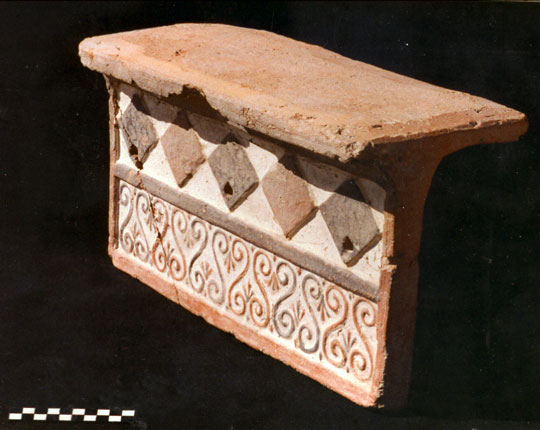
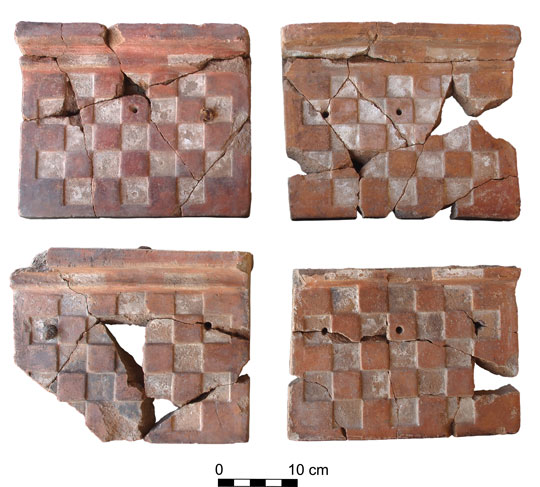
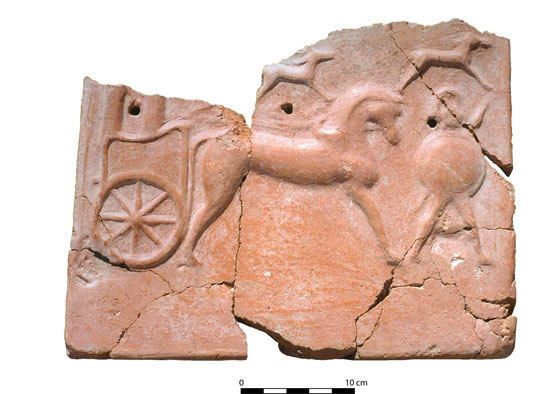
Roof 1 points to connections with western Anatolia and Ionia, where similar tiles are known at Miletus, Didyma, Sardis, and Düver. Roof 2 seems more at home within Phrygia, with parallels at Neandria, Sardis, Düver, and Pazarlı. Similarities with the Lydian capital Sardis are closest and deepest, which may suggest that tiling reached Gordion in the wake of Lydian expansion into central Anatolia in the early sixth century BCE.
The Gordion skyline in the late Middle Phrygian period must have been a dazzling site. The Anatolian tile tradition is well known for exuberant decoration, and buildings at Gordion were literally draped with an abundance of painted and relief-molded motifs. The rich array of decoration reflects three strands of artistic taste: Greek, Phrygian, and Near Eastern. The star and scroll design along the gable edge of Roof 1, for example, is common in Ionian and mainland Greek minor arts. Other tiles are adorned with lozenges, checkerboards and squares, designs with a long, deeply rooted history in central Anatolia and Phrygia.
Still other tiles are decorated with figural motifs ultimately derived from traditional Near Eastern prototypes, e.g., panels depicting hunting from a horse-drawn chariot, antithetical lion and bull, and a duel often referred to as Theseus and the Minotaur. Interpreting such eclecticism is difficult. Some have seen it as a sign of the Phrygians’ lack of artistic originality, others as a deliberate form of syncretism practiced by local rulers hoping to evoke a cosmopolitan air of wealth, prestige, and power. The latter seems more likely given what we know about late Middle Phrygian Gordion as a prosperous, well-connected regional center.
Further Reading
- Glendinning, M. 2005. “A Decorated Roof at Gordion: What Tiles are Revealing about the Phrygian Past,” in The Archaeology of Midas and the Phrygians. Recent Work at Gordion, ed. L. Kealhofer, Philadelphia, pp. 82-100.
- Glendinning, M. 1996. “A Mid-Sixth-Century Tile Roof System at Gordion,” Hesperia 65, pp. 99-119.
- Henrickson, R. C., and M. J. Blackman. 1999. “Hellenistic Production of Terracotta Roof Tiles Among the Ceramic Industries at Gordion,” Oxford Journal of Archaeology 18.3, pp. 307-326.

